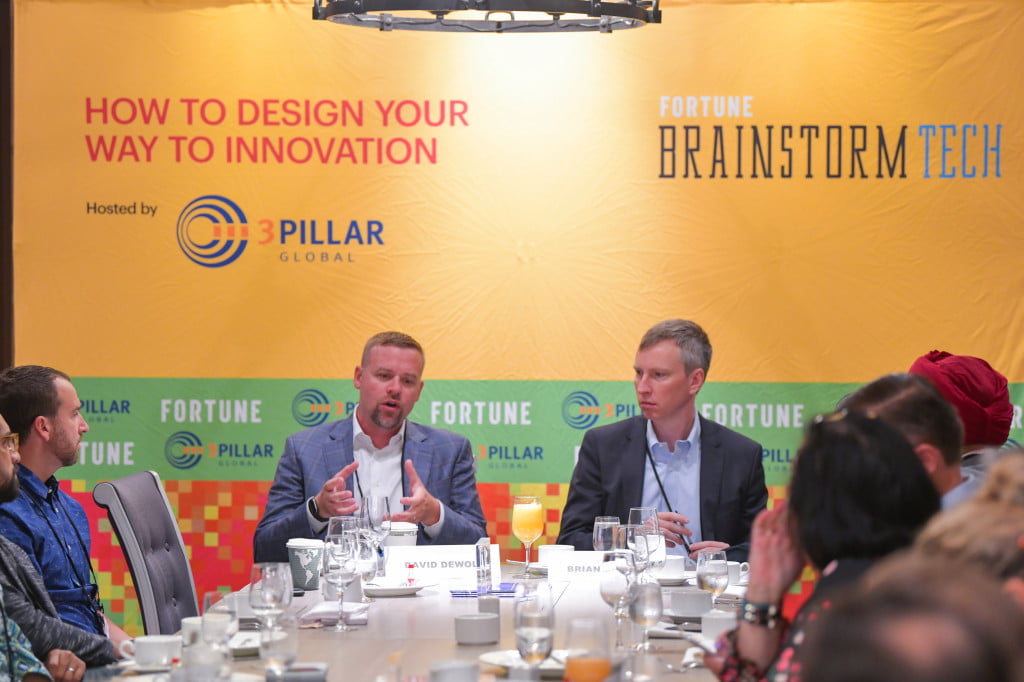
 Design is becoming an integral part of the success of nearly every company. The conversation is no longer solely about aesthetics, but rather how to design products and systems to aid with digital transformation, address big ethical concerns of a company’s technology, and evolve legacy systems and processes.
Design is becoming an integral part of the success of nearly every company. The conversation is no longer solely about aesthetics, but rather how to design products and systems to aid with digital transformation, address big ethical concerns of a company’s technology, and evolve legacy systems and processes.
That was the general consensus at a breakout session at Fortune’s Brainstorm Tech conference on Tuesday in Aspen, Colo., where business leaders discussed key strategies for companies that aim to design their way to innovation.
Here are five tips to help businesses with creating a design strategy:
1. Focus on the Purpose
Oftentimes companies, especially startups, overthink design and end up with a list of 30 items they think will help them with an innovative product or disrupt a market. But that strategy actually muddles what the company eventually communicates to its market, making it confusing and less attractive to consumers.
“A lot of it is getting back to the basics,” JB Osborne, CEO of brand design company Red Antler, said during the session. “Who are you speaking to and why do they care?”
The most effective design strategies focus on the purpose of the product and make sure that all teams and efforts work to accomplish the main goal, Osborne said.
David DeWolf, CEO of software development firm 3Pillar Global, said his company takes the same approach when developing products for clients.
“Where we start is, ‘What’s the outcome you’re driving?” he said. “Make sure all are working toward the same thing and not working in silos.”
2. Feedback Cycles Are Critical
A company needs to constantly be getting feedback from its customers on the direction it’s headed. Is the new product working? Does it have glitches? Is it a good user experience?
All of those answers should be considered as the company continues to tweak its product, experts said. And companies should be ready to pivot at any moment if the direction they are headed appears to be problematic.
On the flip side, customer feedback shouldn’t be the end all, be all, said DeWolf. While having a feedback loop is critical to the development of innovative products, companies should also be guided by the business objective.
“A lot of companies fail if they only listen to customers and what they want versus what they need and would be willing to pay for,” he said.
3. Think Horizontally, Not Vertically
If a company is working on a product in silos, chances are the overall experience will be negatively impacted.
It’s a common mistake, business leaders said, especially because software developers typically like to specialize, working on one part of the product and being held accountable for just one piece. But measuring the success of a user’s experience can’t be broken down into parts.
John Foreman, senior vice president of product at Mailchimp, said it took years for his team to make the switch. But now that it has, the company is reaping the reward.
The company had to change its metrics to evaluate the entire experience, including where customers were typically opting out, he said. “If we measure that properly, we get bump in revenue.”
It’s also important to have what Siobhan McFeeney, global leader of business transformation at Pivotal, called a “balanced-team” approach. That means stacking teams with a product manager, engineer, and designer, so all things are considered for each piece of the business. Sometimes, that could also mean holding product managers accountable for code.
“One thing that can help is rotation,” McFeeney said about moving employees to work on different parts of a project. “We rotate every 90 days.”
4. Use Tech for Practicality, Not Buzz
Artificial intelligence has become the latest buzzword at tech, and even non-tech, companies. But companies should use new technologies only when absolutely necessary to avoid building useless products and features, experts said.
Tools like AI should be used to serve design. So companies should look for areas where the technology can help improve the customer’s experience, for example, by improving speed.
If AI and other new technologies are viewed as nothing other than another tool in the tool belt, it can be better applied to the business.
“AI is sort of the tail wagging the dog,” Foreman said. “We need to flip it back and judiciously use AI.”
5. Design at the Top
Business leaders agree: Design is becoming a major consideration. And increasingly companies are looking for people who have design backgrounds to serve in executive positions.
Building a company with design at the forefront and including design at the executive and board levels could help create a culture focused on design. That culture ultimately benefits the consumer, which then translated into more money.
[“source=fortune”]





